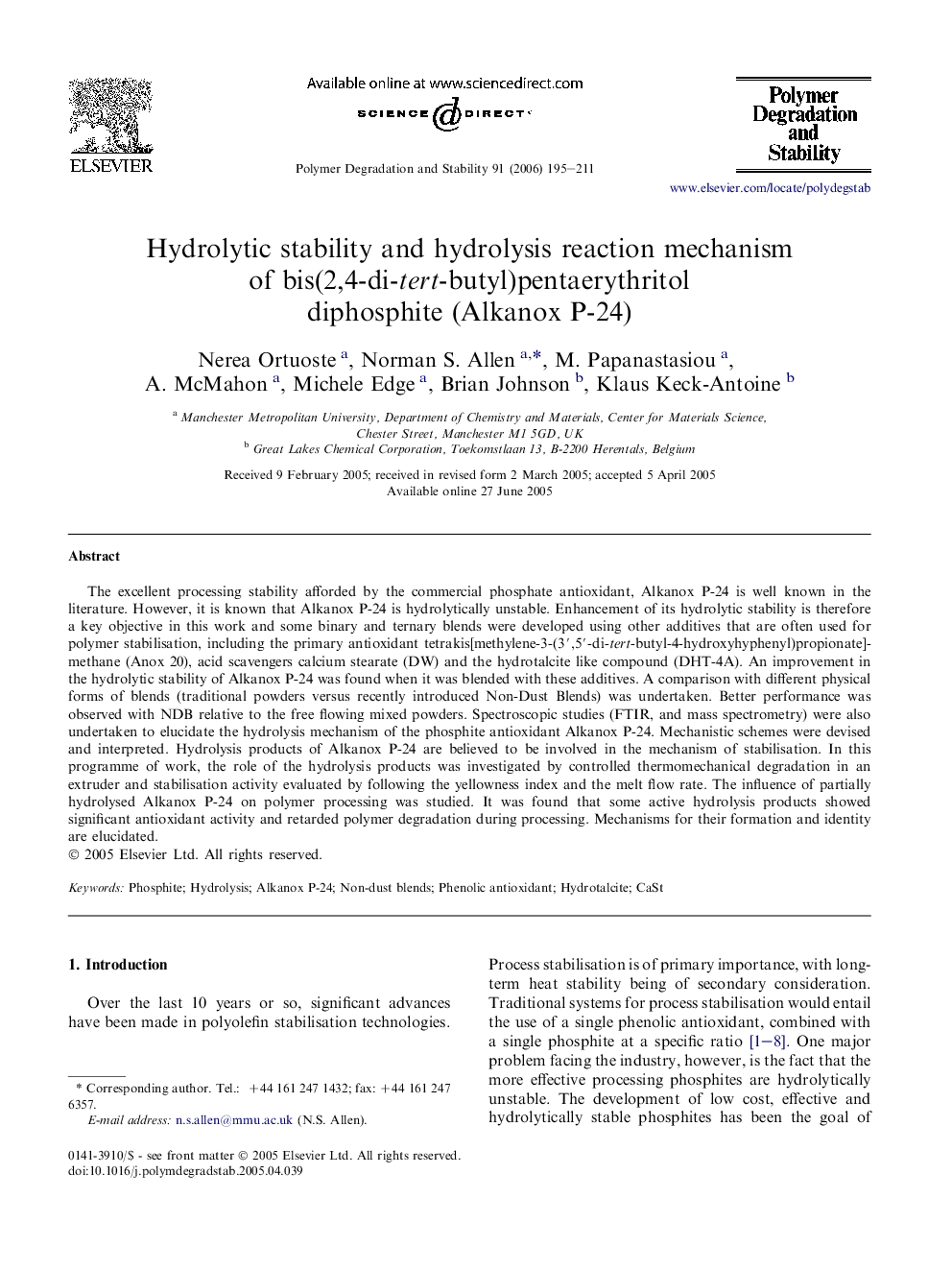| Article ID | Journal | Published Year | Pages | File Type |
|---|---|---|---|---|
| 5205131 | Polymer Degradation and Stability | 2006 | 17 Pages |
The excellent processing stability afforded by the commercial phosphate antioxidant, Alkanox P-24 is well known in the literature. However, it is known that Alkanox P-24 is hydrolytically unstable. Enhancement of its hydrolytic stability is therefore a key objective in this work and some binary and ternary blends were developed using other additives that are often used for polymer stabilisation, including the primary antioxidant tetrakis[methylene-3-(3â²,5â²-di-tert-butyl-4-hydroxyhyphenyl)propionate]methane (Anox 20), acid scavengers calcium stearate (DW) and the hydrotalcite like compound (DHT-4A). An improvement in the hydrolytic stability of Alkanox P-24 was found when it was blended with these additives. A comparison with different physical forms of blends (traditional powders versus recently introduced Non-Dust Blends) was undertaken. Better performance was observed with NDB relative to the free flowing mixed powders. Spectroscopic studies (FTIR, and mass spectrometry) were also undertaken to elucidate the hydrolysis mechanism of the phosphite antioxidant Alkanox P-24. Mechanistic schemes were devised and interpreted. Hydrolysis products of Alkanox P-24 are believed to be involved in the mechanism of stabilisation. In this programme of work, the role of the hydrolysis products was investigated by controlled thermomechanical degradation in an extruder and stabilisation activity evaluated by following the yellowness index and the melt flow rate. The influence of partially hydrolysed Alkanox P-24 on polymer processing was studied. It was found that some active hydrolysis products showed significant antioxidant activity and retarded polymer degradation during processing. Mechanisms for their formation and identity are elucidated.
